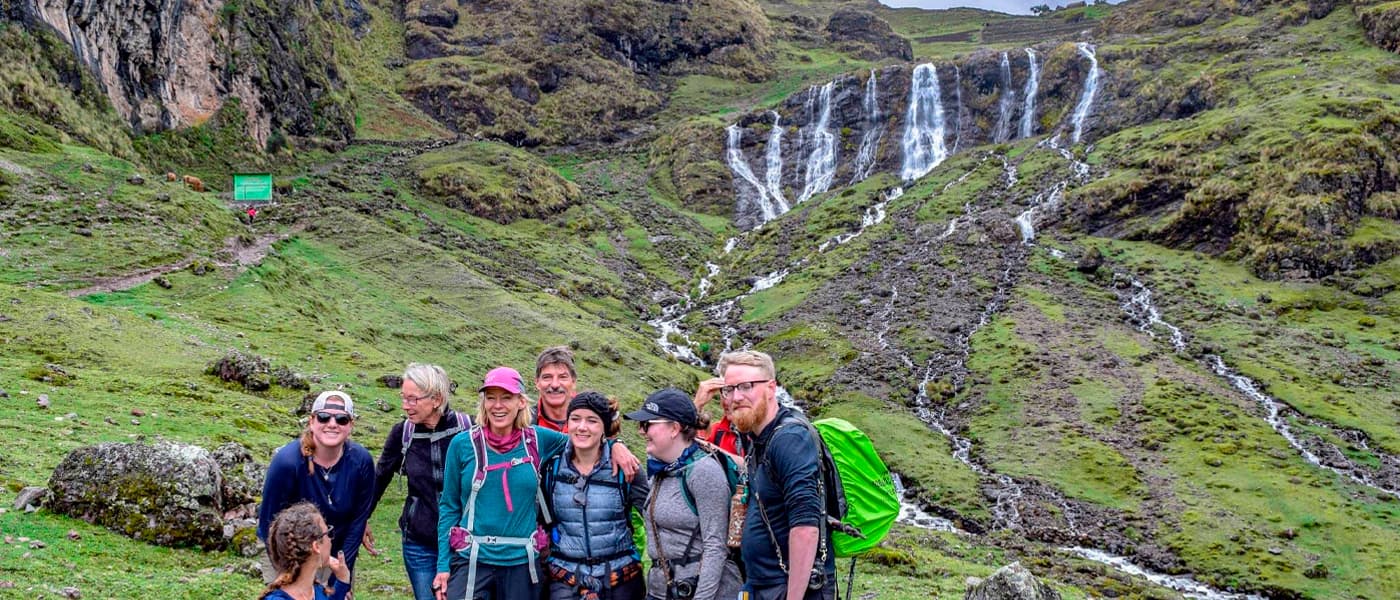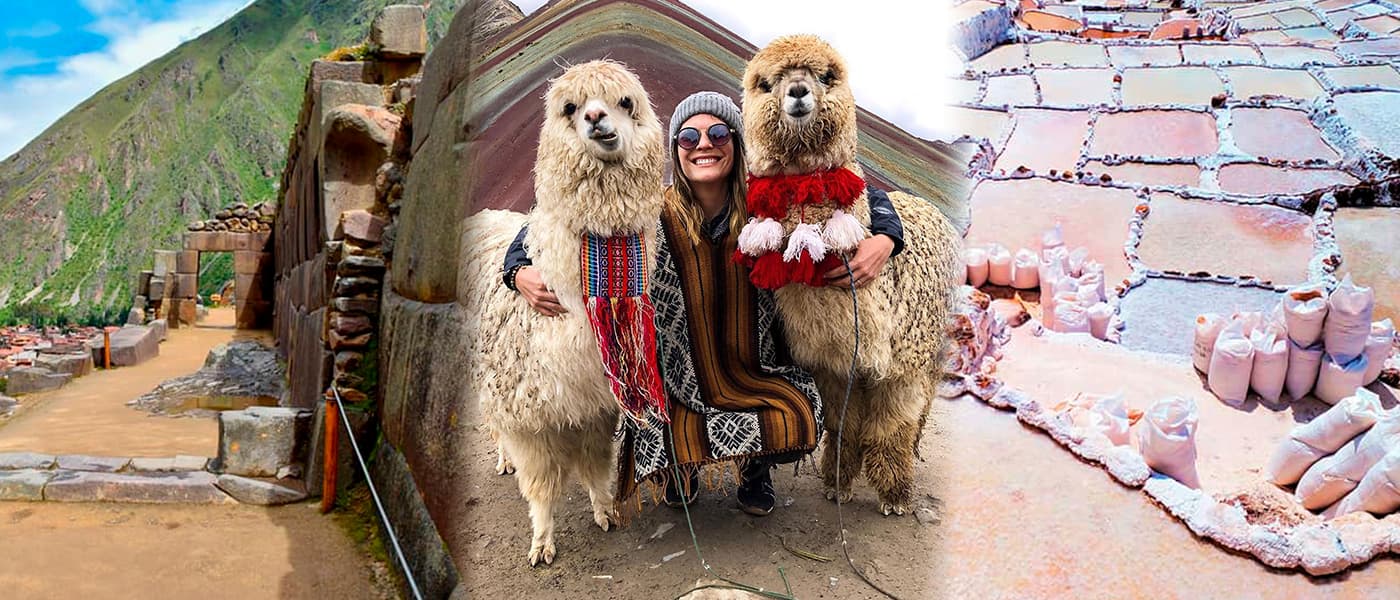Best Information About Machu Picchu Mountain
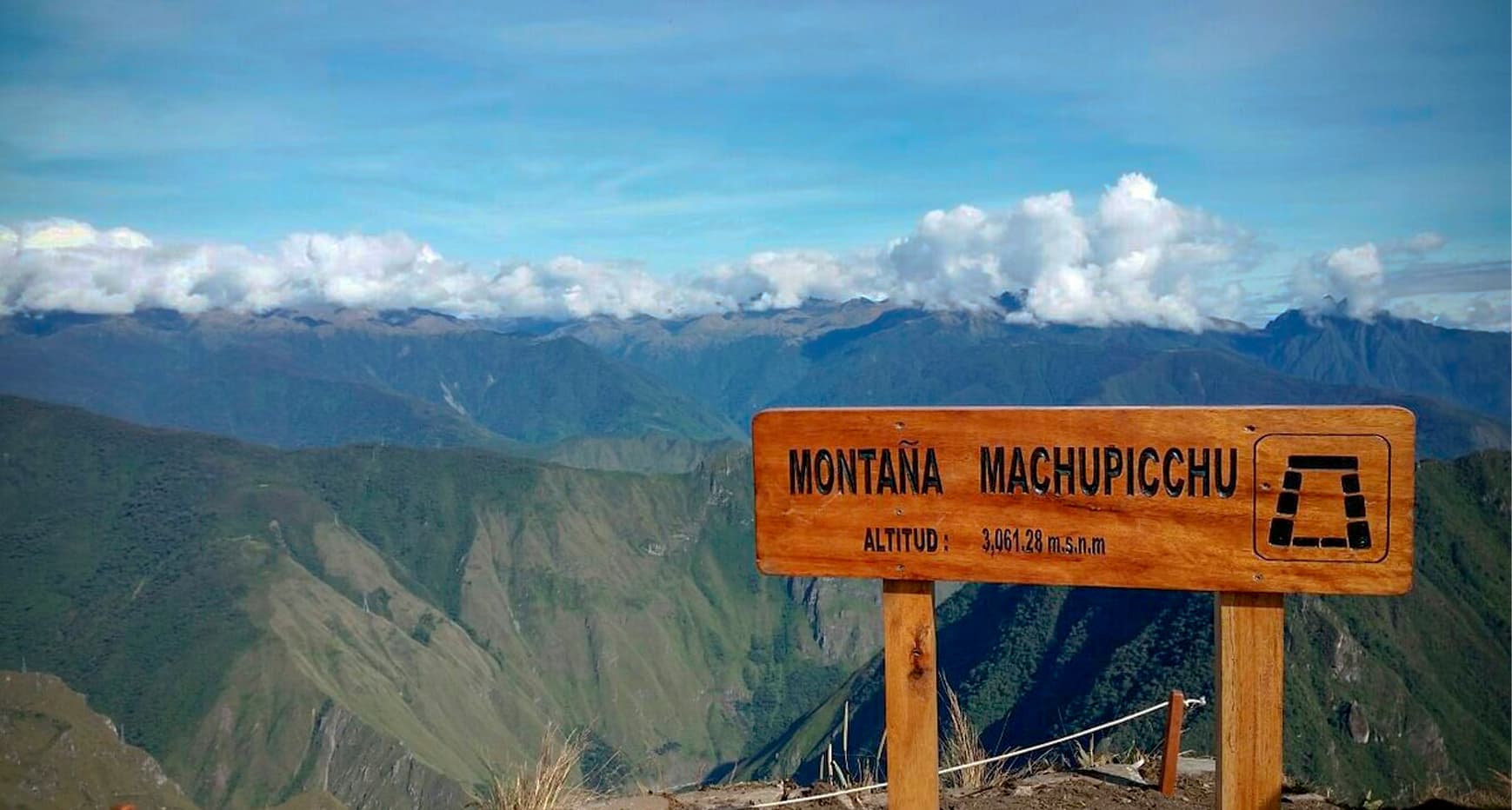
You’ve come to Peru and landed in Cusco, ready to see that one of the New Seven Wonders of the world, Machu Picchu. The Historical Sanctuary of Machu Picchu will reward you with panoramic views of breath stealing landscapes of glaciers, mystical and tranquil valleys, with its indigenous flora and fauna. The citadel is surrounded by 3 stunning mountains that you can trek in order to enjoy different perspectives of the Vilcabamba Mountain Range and to get even better views of Machu Picchu and its landscape. The three mountains include, the popular and fast selling Huayna Picchu Mountain, the easier and shorter Huchuy Picchu Mountain and finally the sometimes overlooked, yet spectacular Machu Picchu Mountain.
This blog explores everything you need to know about hiking Machu Picchu Mountain.
Why choose Machu Picchu Mountain?
Contrary to popular belief, the famous pictures you see on blogs, social media and other sites are actually taken from Machu Picchu Mountain and not Huayna Picchu Mountain. The top of the mountain offers the most spectacular panoramic views of the landscape, including, the Urubamba River, Machu Picchu Citadel and of cause the famous Huayna Picchu Mountain. The name means “old mountain” in the native language of Quechua. You’ll get an eye-full of the lush, green cloud forest, high peaks, deep valleys, a powerful river and even the Salkantay glacier in the distance. In the background, you will get to see the last section of the Classic Inca Trail to Machu Picchu.
It’s less difficult, less steep, and less dangerous than its more famous counterpart Huayna Picchu and, thus, has no age limit. This is a good option for active families to do together. Additionally, the tickets are more easily accessible at short notice because they do not sell-out as quickly. However, you need to keep in mind that it is still a strenuous hike, with hundreds of narrow and steep Inca steps to maneuver on your way to the top.
Buying the Ticket
The Machu Picchu ticket doesn’t come alone. In short, you need to get the ticket for “Montaña Machupicchu + Circuito 3”. The tickets includes a timed tour of circuit 3 in the citadel, together with the hike up the mountain. However, please note that circuit 3 is the shortest circuit in the citadel and if you wish to explore more sites, we highly recommend purchasing another circuit like circuit 2. Circuit 2 has a more comprehensive tour of the citadel.
You’ll choose either the 7-8 AM or 8-9 AM entrance time (which means you’ll enter the trail either between 8-9 AM or 9-10 AM, respectively). It will be printed on the upper lefthand corner of your ticket.
Only 400 of these tickets are available per day, 200 for each time slot. You should make a reservation at least one month in advance and during high season, try to book earlier if possible.
It costs 200 soles for an adult, 125 soles for a student, 118 soles for a child between 3-17 and free for a child under 3 (prices for foreigners). There’s no age limit for this hike. You can also ask your tour operator to make this purchase for you for about $USD75.
The total time limit for your visit to Machu Picchu, generally, is 6 hours. You must bring a printed copy of your ticket to the entrance gate. You also need your original passport and the name on the ticket and passport need to match.
Note: If you’re hiking the Inca Trail, you’ll need to buy a second Machu Picchu ticket to hike Machu Picchu Mountain. Inca Trail hikers are only allowed entrance to circuit 5 of the citadel.
Getting to the Trailhead
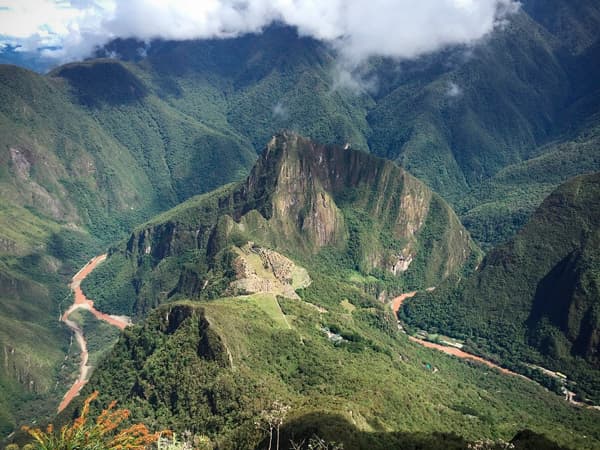
The time slot for entrance to the trail is designated for 1 hour after your entrance time slot to the National Park. For example, if you enter Machu Picchu between 7-8 AM, you’ll need to enter the trail between 8-9 AM, so it’s better to arrive at the beginning of your 60-minute time slot (7 AM) rather than at the end (8 AM).
First, you’ll pass through the entrance gate for circuits 1 & 2. Go upwards to the left, following the wooden signs toward Machu Picchu Mountain (the same trail that goes to the Sun Gate). It will take about 30 minutes for you to walk to the trailhead from the park entrance. Once the signs have led you to the control point for the trail, you’ll check-in and show your passport and entrance ticket. After the hike, you’ll exit the park by the same trail (without completing circuits 1 or 2) and re-enter the park to visit your designated route, circuit 3 of the citadel.
Tip: As you make your way to the trail from the Machu Picchu entrance, take time to appreciate the archeological sites you’re passing, as they’re not included on the circuit where you’ll do your guided tour.
To take full advantage, you could enter at the earliest time of your ticket (for example, 7 AM) and then spend 1 hour and 45 minutes enjoying the citadel between the Machu Picchu entrance and the trailhead to then begin your hike at 8:45 AM. Just make sure you pass the mountain’s checkpoint before your time slot ends (in this case, 9 AM).
Is the hike difficult?
It is relatively moderate to challenging, it will all depend on your physical condition and will to hike. Compared to Huayna Picchu Mountain, the hike is longer, however, the path is wider with less sheer cliffs. The path travels near the House of Guardians where you will most likely cross paths with hikers of the Inca entering from the Sun Gate. After passing the guardhouse the climb is a one-hour gradual incline. As you gain more altitude the path becomes narrower, steeper and more challenging.
Walking this trail lasts approximately 4 hours and is more than 1600 steps to the top of the mountain. Some parts of the path are rock and some are gravel or earth. The stones do get slippery in rainy season (November-March), making it a lot more difficult to hike at this time of the year. There are a lot of places to stop and rest or take pictures along the way. There’s little to no shade cover as you hike, so be sure to use a hat and sunscreen.
From the summit, you’ll get the most amazing bird’s eye view of the majestic Inca city, as well as the surrounding green mountains, snowcaps, deep valleys and Urubamba River.
Here are some stats:
- Max elevation: 3082 MASL / 10,111 Ft
- Starting elevation: 2430 m – 7972 ft.
- Elevation gain: 652 m / 2,139 ft
- Hiking distance: 3.9 km / 2.4 mi
- Difficulty level: Moderate to challenging
- Hiking time: 4 hours round trip
Exploring Circuit 3
There are 5 established visitation circuits to traverse the Historical Sanctuary of Machu Picchu. You can find maps of each here!
When you buy a ticket including Machu Picchu Mountain, you can only enter circuit #3. The route takes about 1.5 hours to explore. It’s a shorter circuit and only visits the lower portions of the citadel. The attractions you’ll pass are: Qolqas (Granaries), Agricultural Zone, Water Canal, Dry Well, Temple of the Sun, House of the Inka, Water Fountains, Water Mirrors, Pisonay Plaza, and Archeological Reserve.
The best option is to do a guided tour to understand what you’re seeing! You can visit with a tour from Cusco, do a multi-day hike to Machu Picchu or hire a guide outside the entrance gate if you arrive on your own.
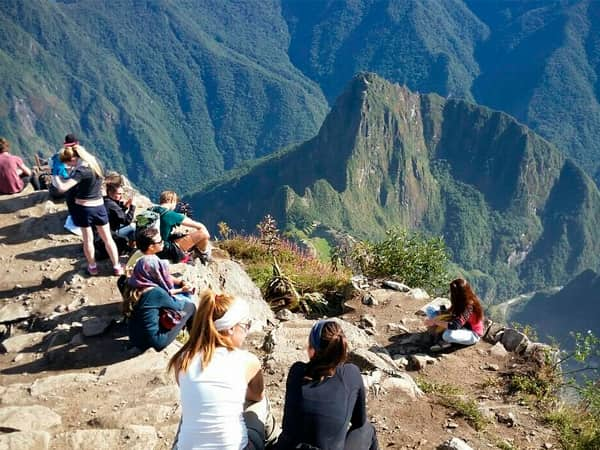
Note: The Temple of the Sun is only open for visits from 1-4 PM.
The Best Time to Go + Weather
In the Peruvian Andes, the rainy season is from November to March, and the dry season is from April to October. The high tourism season coincides with the dry season.
Machu Picchu is in the cloud forest of the Andes, and, therefore, the weather is always warm and humid, with lots of mosquitoes and biting sandflies.
The rainy season happens around the winter, while the dry season is during the winter. However, dry season is considered the Andean summer because of the warmer temperatures during the day. Temperatures year-round range from 7°C to 28°C (44°F to 83°F). It is highly recommended to hike during the dry-season because during wet season the Inca steps can be slippery. I can say from personal experience that it feels hotter than that during the day! It’s just a few degrees warmer in rainy season and a few degrees cooler in the dry season.
Humidity is, on average, 50% in the dry season and 90% in the rainy season.
Dry season pros:
- Less foggy in the mornings (better views)
- No need for a raincoat
- Less humidity
- Not as many bugs
- Stones aren’t slippery
Rainy season pros:
- Less crowded
- Easier to get tickets on shorter notice
- Rain will cool you off
- Cheaper plane tickets to Peru
So when’s the best time to visit? Try the shoulder months in September/October or March/April for the best of both worlds!
Note: The two busiest months of the high tourism season are June and July.
What to Wear & Pack
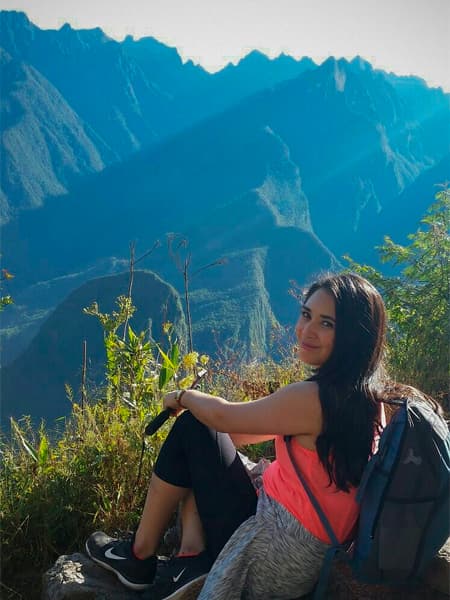
- Breathable activewear (long pants and long sleeves to avoid sunburn and bug bites; shorts and tank if you prefer)
- A hat, preferably a wide one that covers your ears and neck
- Sunscreen
- Bug spray
- Water in a zero-waste bottle(s)
- Zero-waste snacks
- Raincoat and extra socks (in the rainy season)
- Sturdy walking/hiking shoes
- Sunglasses
- Camera and extra batteries
- Printed entrance ticket
- Passport
- Physical or virtual covid-19 vaccination card (3 vaccines) OR negative PCR test
- Cash for the bathroom (costs 2 soles, located outside of the entrance gate)
- Cash for the bus ticket from Aguas Calientes to Machu Picchu and back
- Cash for tips and snacks
Note: Trekking poles aren’t allowed in Machu Picchu except for the disabled and elderly and with prior permission from the governing authorities. If you do get permission, they must be rubber-tipped.
Interested in doing a multi-day trek to Machu Picchu? Here are the best 7 options out there!
